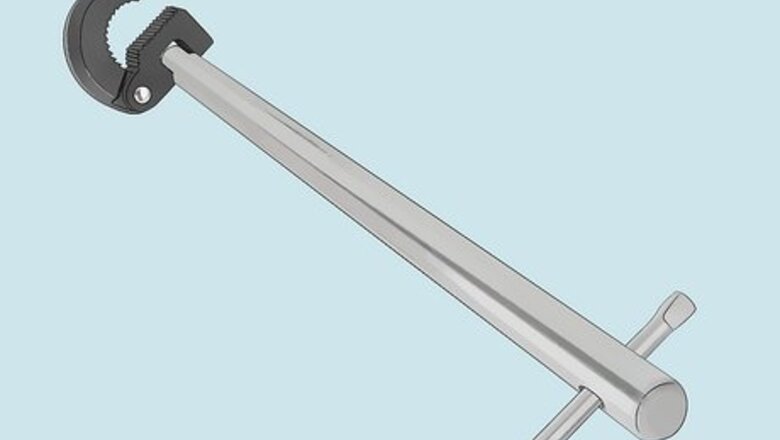
views
What is a basin wrench?
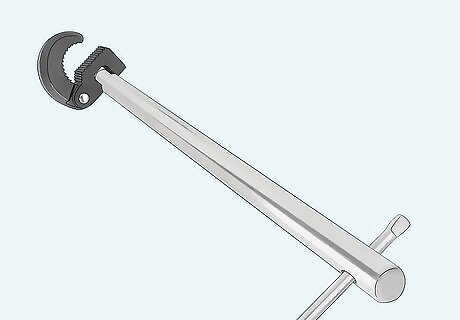
Basin wrenches are long-handled tools for reaching nuts in tight spots. One end of the basin wrench has adjustable spring-loaded jaws that clamp around the nut. The wrench has a long, thin handle so you can easily reach the nuts in the tight space between the wall and the underside of your sink. The end of the handle has a horizontal T-bar that you can hold onto to get more leverage when you’re turning a tight nut. You can use a basin wrench on any plumbing nuts that are hard to reach, like under your sink, or behind a toilet or appliance. Basin wrenches come with differently-sized jaws to fit around smaller or larger nuts. Get a basin wrench with a built-in light if the space underneath your sink is dark. That way, you’ll get a better view of the nuts without having to hold a flashlight.
Tightening or Loosening Nuts with a Basin Wrench
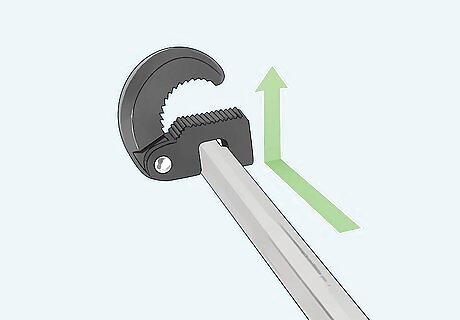
Set the basin wrench’s head perpendicular to its handle. Your wrench’s jaws have a hinge where they connect to the handle so you can position the head flush against the nut. Hold the wrench so you’re looking at the jaws from above. If you’re loosening the nut to remove the faucet, push the hinge down so the jaws open toward the right. If you’re tightening the nut to secure the faucet, use the hinge to position the jaws so they open on the left side.
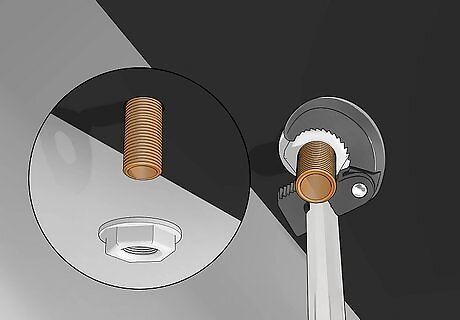
Fit the basin wrench’s jaws around the nut. Get underneath your sink and guide the wrench’s jaws up to the mounting nut. Push the wrench onto the nut so the grooves on the jaws hug the nut tightly. If the jaws don’t fit tightly around the nut, then the wrench you’re using is too big. Get a basin wrench with a smaller set of jaws for your repairs.
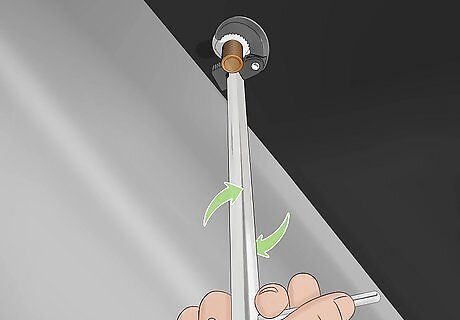
Turn the T-bar on the wrench’s handle to loosen or tighten the nut. Extend the T-bar out to one side of the handle and hold onto it tightly. Turn the wrench counterclockwise if you want to loosen the nut. If you want to tighten the nut and secure the faucet to the sink, rotate it clockwise instead. If the jaws slip off of the nut when you try to turn it, then the jaws are positioned in the wrong direction. Flip the jaws so they point in the opposite direction and try turning the nut again. If the nut still won’t turn, try gripping the T-bar with a regular adjustable wrench to get more leverage.
Troubleshooting

Use a telescoping basin wrench if you can’t reach the nut. A telescoping basin wrench has an extendable handle so you can access nuts behind a deep sink. Press the button on the basin wrench’s handle and pull the handle out until the button clicks into the next hole. Once you set it to the length you need, position the jaws around the nut like normal.
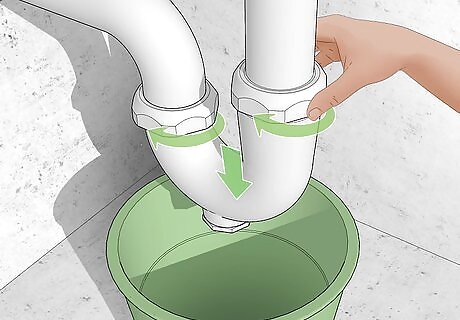
Remove the P-trap if the space under your sink is cramped. The P-trap is the elbow-shaped pipe connected to your sink’s drain. Put a bucket underneath the pipe to catch any water that may spill out. Unscrew the pipe connectors holding the trap on the wall and drain pipes so you have more space underneath your sink to work. Be sure not to use your faucet when you disconnect the P-trap since the water will spill out underneath your sink.
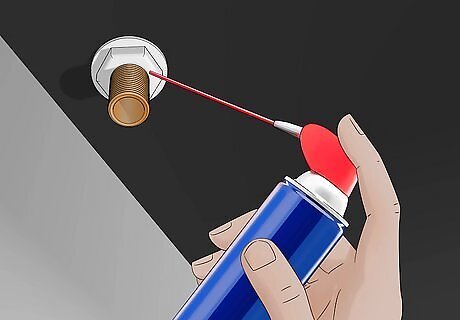
Spray penetrating oil on the nuts if they’re corroded. Rusty nuts need a little more lubrication to help them turn easier. Point the nozzle on a can of penetrating oil at the nut and spray a thin coat of oil over it. Let the oil seep into the nut and threading for 30 minutes before trying your wrench again.
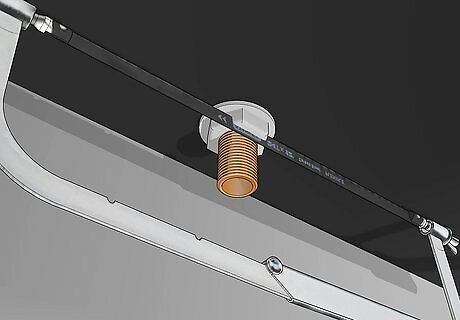
Cut the nuts out with a saw if you can’t remove them with your wrench. If the nuts still won’t budge, position a hacksaw or reciprocating saw vertically on the side of the nut and start cutting through it. It’ll take a little elbow grease, but the saw will eventually cut through the metal. Then, grab the nut with a pair of pliers and pry it off the bottom of the faucet. If you’re replacing the full faucet and can’t cut through the nut, you can actually saw through the faucet itself.
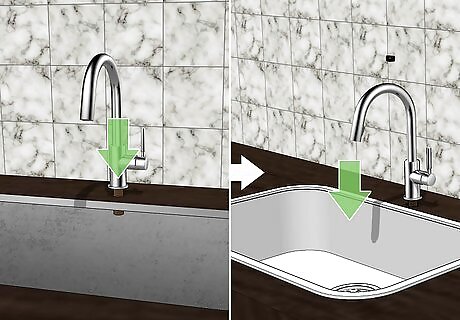
Install the faucet before setting a new sink in place. If you’re installing a new sink or replacing the entire basin, you don’t have to work in a cramped space to install your faucet. Right when you get your new sink, drop the faucet into the holes and tighten the nuts right away. Then, carefully drop the sink into your countertop to install it. After that, just connect the water supply lines to the faucet to finish up.

Try strips of duct tape to remove the nut if you don’t have a basin wrench. Cut a 12 in (30 cm) piece of duct tape off of a roll. Cut the piece in half lengthwise so you have 2 strips. Stick one of the strips onto the back of the other strip to give it extra strength. Wrap 6 inches (15 cm) of the strip counterclockwise around the nut. Hold onto the remaining section of tape and pull it hard to loosen the nut. You can also place 2 coins on the sides of the nut and hold them tightly to improve your grip as you unscrew the nut by hand.


















Comments
0 comment